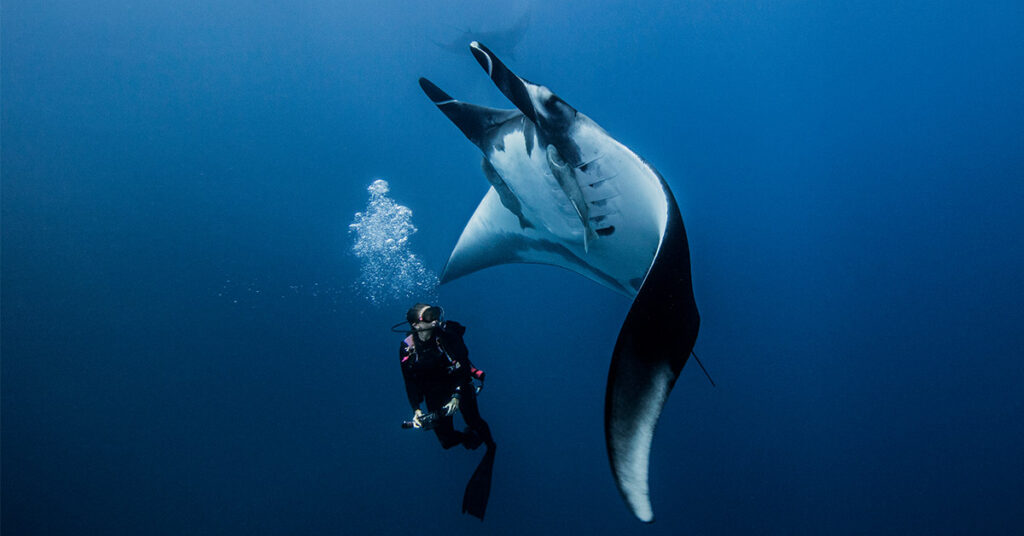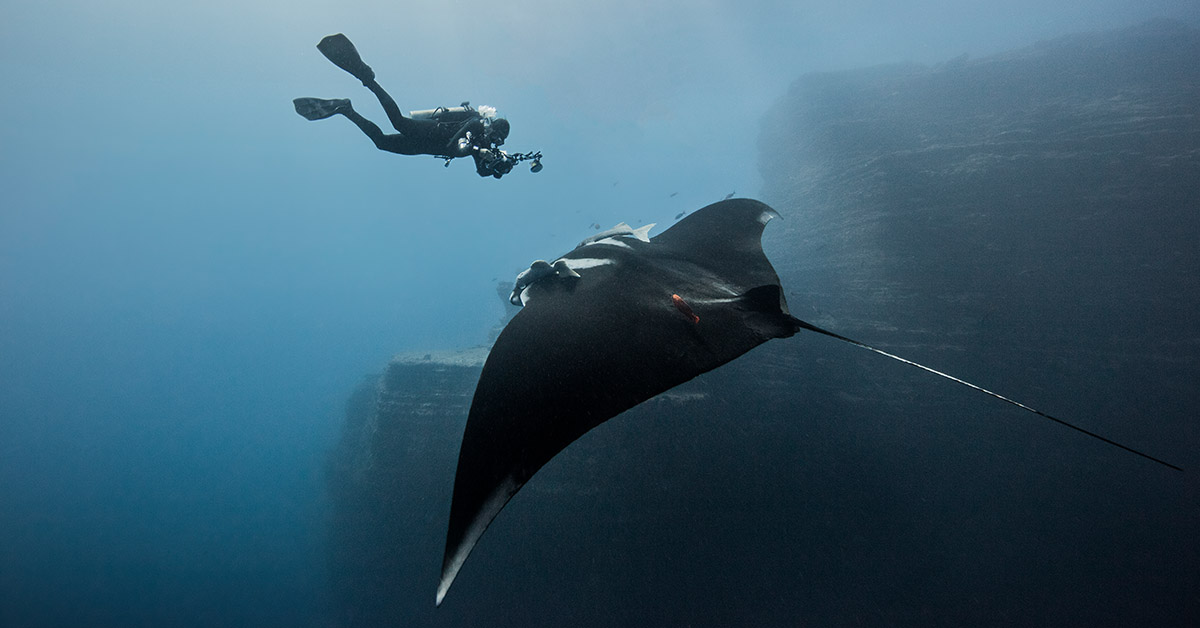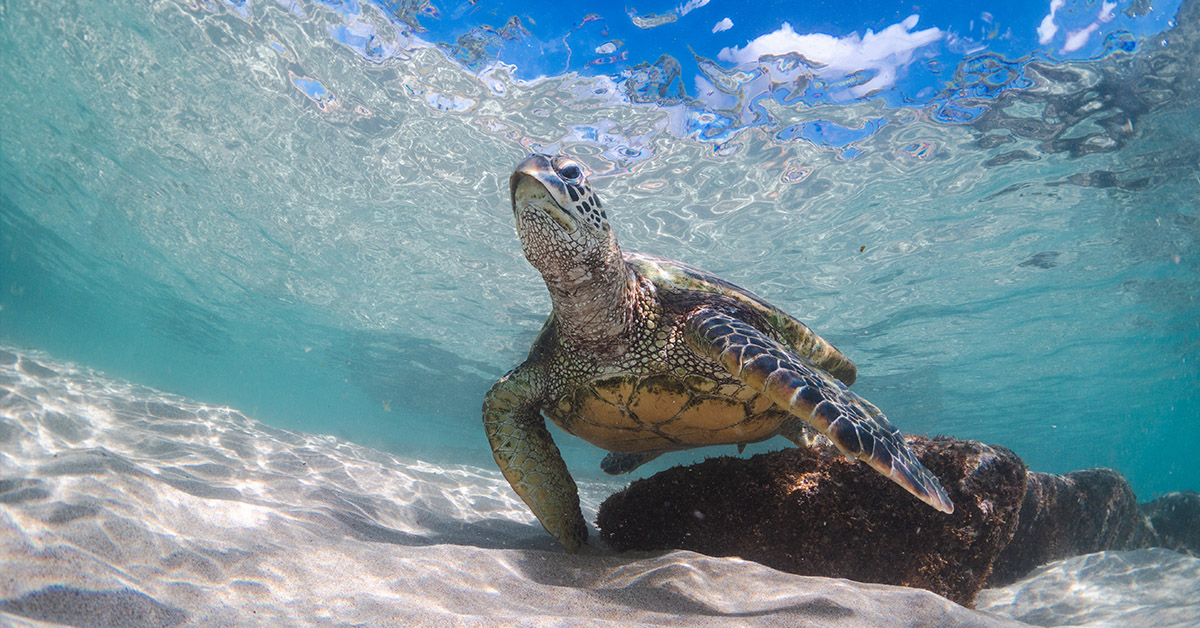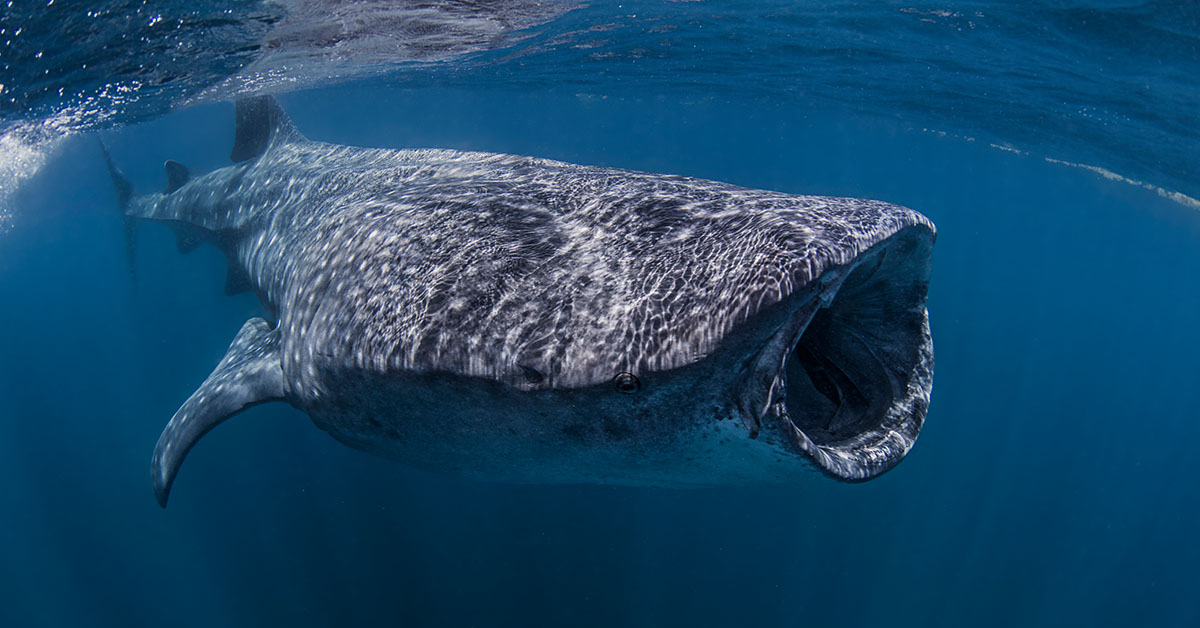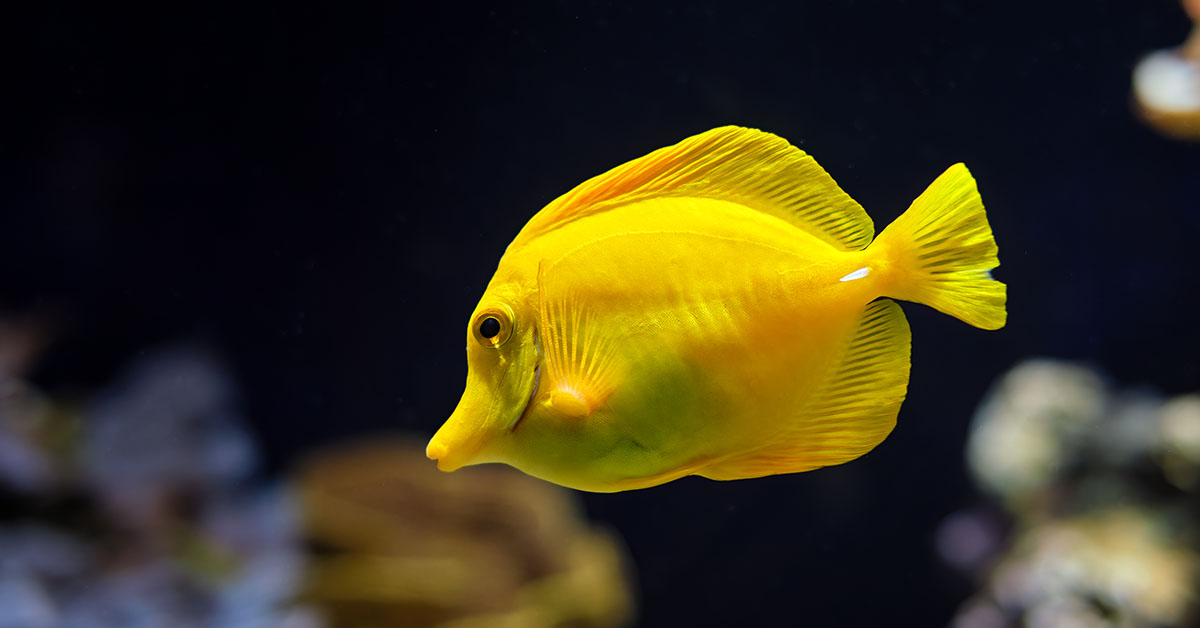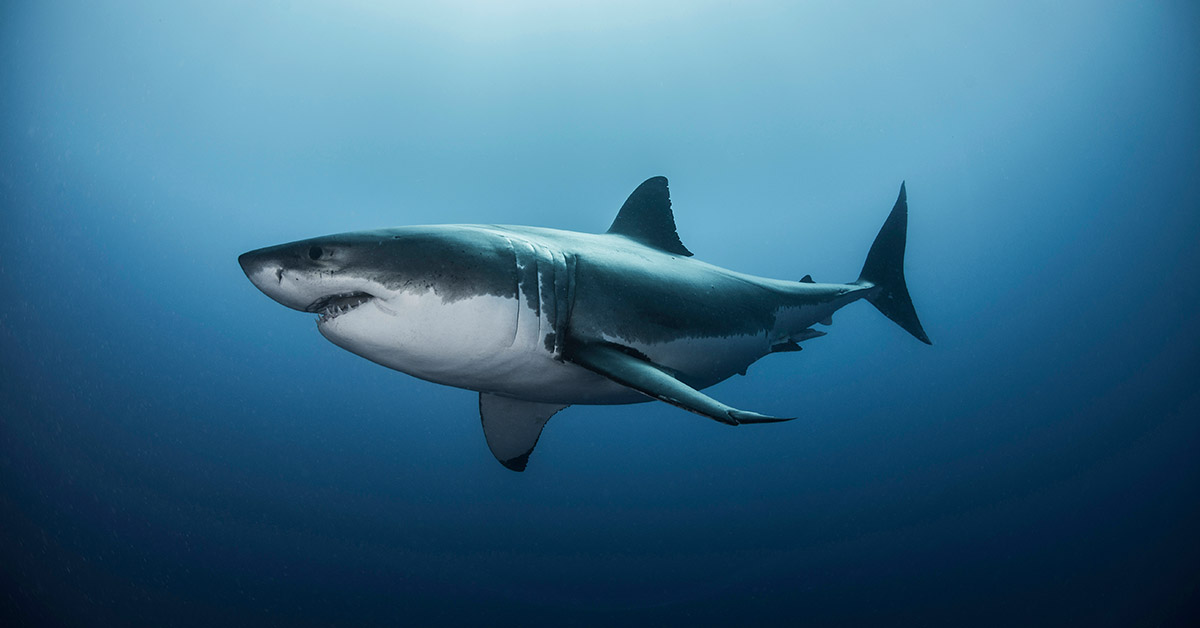Introducing seven amazing sea animals that are best seen by scuba divers in their natural environment.
Scuba diving is an incredible thrill all on its own, but nothing adds to the excitement like spotting a rare or unusual sea animal.
Best of all is finding a sea animal that you know can’t be found anywhere except under the surface. Modern aquariums offer a peak at many sea animals, but it’s nothing like viewing them in the wild. Read on to learn about seven sea animals that are best seen in their natural habitat – by taking a scuba dive into the deep blue sea.
- Giant oceanic manta ray – The giant oceanic manta ray is the largest ray in the world, reaching up to 29 feet from wingtip to wingtip (though the average specimen is about half that size). These majestic sea animals can be found across the world in tropical to temperate waters, more or less in the space between the Tropics of Cancer and Capricorn. They are closely related to the reef manta ray, which can occasionally be found in captivity, but that species is smaller and has a much more limited, coastal distribution. The giant manta ray is highly migratory, which, combined with its large size, is the reason it isn’t kept at your local aquarium. Instead, people interested in catching a glimpse of the giant oceanic manta ray will have to take a dive; Hawaii’s Big Island is a popular destination for such trips.

- Green sea turtle – Green sea turtles are beloved sea animals and a favorite of scuba divers. Green sea turtles are actually not very green; their outer shells range from a dark olive to black color. The name instead comes from the color of their fat, which hints at why these beautiful animals are so hard to find in most places. The turtles and their eggs were once hunted to the brink of extinction. Now globally protected, they are making a fragile recovery, though still threatened by illegal hunting and unsustainable fishing practices. These turtles typically don’t do well in captivity because of their ocean-going habits and highly migratory life cycle. While green sea turtles can be found in tropical and temperate waters around the globe, your best chance for seeing them is near one of the islands where they lay their eggs; the Cayman Islands and Hawaii are both considered hotspots.

- Whale shark – Whale sharks are the largest fish and the largest shark in the world, which makes these sea animals almost impossible to keep in captivity. For scuba divers, though, these gentle giants are both thrilling to see and offer a rare chance to interact with large marine life. Whale sharks can live for up to 130 years and reach lengths of nearly 60 feet, which makes an encounter with one an awe-inspiring experience almost impossible to imagine. These sharks are filter feeders, sustaining their massive bulk off the smallest creatures in the ocean, mainly eating fish eggs and plankton, microscopic plants and animals. David Thomas from everythingfishkeeping.com says “they pose no danger to humans, and will allow divers to get quite close.” One of the best places to experience these magical moments for yourself is in the Maldives. Check out this list for the best places in the world to see whales sharks.

- Hawaiian monk seal – These sea animals are one of only two mammals native to Hawaii, but how much longer they’ll be able to call their namesake state home is in question. Only 1,570 Hawaiian monk seals are believed to remain, their population diminished by hunting, development, and fishing net entanglement. While some conservation efforts have included raising these seals in captivity, the Hawaiian government is fighting fiercely to preserve their native wild population, and the small size of that population means that finding monk seals in captivity is rare. A trip to Hawaii’s northwestern islands, though, is almost sure to net you a glimpse of one of the rarest marine mammals in the world.
- Narwhal – Narwhal are a type of Arctic whale, sometimes called the “unicorn of the sea” because of their single distinctive horn, which is actually a long tooth whose full purpose remains unknown. The unicorn nickname is also an apt descriptor of the elusiveness of these sea animals; narwhal remain mysterious. Some of this elusiveness may have to do with their habit of diving as deep as 1500 meters. One thing that is well known about narwhal is their migratory patterns, which means divers can time their trip to the Arctic for May and June, when they have the best chance of seeing narwhal close to the shore.
- Yellow tang – This may be a confusing entry, as yellow tangs are very popular in saltwater aquariums. But for those interested in conservation, scuba diving is the only ethical way to view one of these eye-catching sea animals. Yellow tangs are impossible to breed and raise in captivity, largely because of their small size and wide-ranging mating rituals. Instead, any yellow tang you see in an aquarium has been caught up in the massive and environmentally devastating trade in ornamental saltwater fish. Anyone who spots a yellow tang in their natural habitat of shallow tropical reefs will agree that this way is much, much better.

- Great white shark – The great white shark is arguably the most famous fish, period. There are no blockbuster classic movies about goldfish. Many people would be thrilled to see a great white shark in an aquarium, but these massive munchers are simply too dedicated to wandering the ocean to ever thrive in captivity. For these highly migratory sea animals, the stress and depression of being kept in a tank all the time eventually becomes dangerous to their physical health, and they either die or are released back into the wild by the facility. Even when they are captured at a very young age, great whites can’t live in captivity for more than a year. However, despite their terrifying image in the popular imagination, scuba divers can actually safely encounter these mighty creatures in the wild by cage diving. While great whites do definitely pose a danger to humans, they aren’t the single-minded bloodthirsty monsters Jaws made them out to be. Divers interested in seeing a great white shark should of course take proper precautions and make their trip with a reputable company, but these organizations abound in places like Gaansbai, South Africa, one of the best places in the world to see great white sharks in their natural habitat.

Spotting new and exciting animals is one of the greatest joys of scuba diving. Armed with this list, you now have seven new must-see sea animals to start crossing off your scuba bucket list.
By David Thomas
About the Author
David Thomas has been keeping fish since he was a child and has kept over 12 different setups. His favourite is his freshwater tank with Tetras and Loaches.

